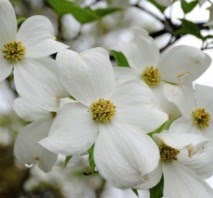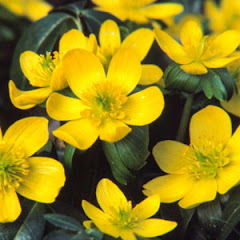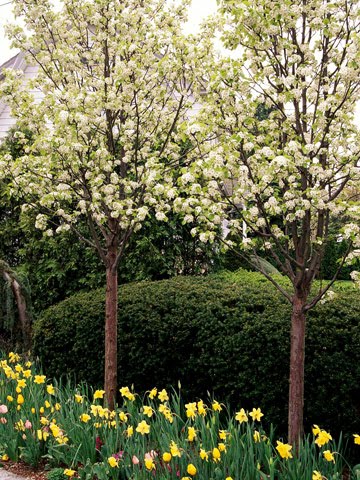 Starting onions:
Starting onions:Onions can be started three way: sets, direct seeding and transplanting. Though planting onion sets is the most popular way to grow them, you'll have better results transplanting seedlings you start indoors ahead of time.
Sets:
Sets are onions that were planted from seed last year. Sets for white, yellow and sometimes red onions are available from mail order catalogs and even some grocery stores. You can raise your own sets but you'll need to direct seed them in the garden by July so they can grow big enough to harvest and store in fall.
Buy onion sets that are firm and marble size but have not sprouted. Big sets may split into two bulbs or produce a flower stalk very early. (When an onion sends up a flower stalk, pull the onion and use it; it will not continue to grow larger nor will it store well.) Sort sets into those large than a dime and those smaller. Plant the larger sets for green onions and plant the smaller ones with adequate spacing: they'll produce bigger onions.
Because sets tolerate light frost, you can plant them outside when temperatures reach 48 degrees, around the middle of April in the Twin Cities. Plant onion sets, pointy end up, 1½ to 2" below soil. If you're planting big sets for green onions, space them close, almost touching. If you're planting them for full size onions, space them 3 to 4" apart. Firm the soil around the bulbs. Choose a location with at least 6 hours of direct sunlight. Sun all day is even better.
If you want to raise a winter's worth of onions, you'll need to plant onions from seedlings in addition to onions from sets, as onions from sets don't store as long as the others.
Transplants:
Raising your own seedlings for transplants gives you a jump on spring in late winter, more choices of varieties to raise, plus it's less expensive than purchasing transplants. Transplants are available through mail order and some garden centers. Regardless of the source, transplants will give you bigger onions by fall. Onions need to be planted indoors 8 to 12 weeks before transplanting outside, so plant the seeds in February to transplant onion seedlings outside in May. Buy only as much seed as you will use this year. Onion seeds don't remain viable for much over a year.
The most important thing to remember when buying onion seed is day length, especially if you're ordering from a national mail order firm. In Minnesota, we need to buy "long day" onion seeds because our summer days can be 16 hours long.
In the south, day length varies less and averages about 12 hours of light per day. Onions for southern gardeners are "short day" onions. You can raise short day onions in Minnesota but they will bulb as soon as day length reaches 12 hours and you'll get small onions.
Long day varieties start to bulb when day lengths are about 14-16 hours. If you start onion seeds indoors, keep lights on only 12 hours each day to give the plants a suitable night. Onion seedlings will form bulbs too early if exposed to long days at any time during their development. You will not get anything bigger than sets.
Plant onion seeds ¼-½" deep in a sterile seed-starting media. They can be planted 3 to a cell in recycled four or six packs or sow thickly in rows if you plant in a deep (4" to 6") flat or other container. Keep tops trimmed 3-4" tall. Water regularly to maintain adequate soil moisture.
Onion seedlings need to be hardened off before transplanting outside, after danger of frost has passed. Expose young plants to outdoor conditions gradually, over a two week period.
Plant seedlings 4" apart and just deeply enough to catch in the soil. When mature, they'll appear to sit on top of the soil.
Once outdoors, keep onions well watered, about an inch a week. Watering is critical when the bulbs start to swell. Water stress produces stronger flavored bulbs. Add fertilizer, based on a soil test, at planting, then again when leaves are 6" tall and lastly when bulbs are starting to swell.
Direct seeding:
If you want to plant onion seeds directly in the garden, you'll probably be most successful with green onions (also called scallions). Our short season makes success less likely when direct-seeding bulb-type onions.
Plant onion seeds in a sunny location where soil drains well. Cover the seeds with ½" of soil and water them regularly. Harvest when the white portion is pencil thick.
Harvest:
Onions are edible at any stage. Immature bulb-forming onions can be thinned from the garden and eaten.
Onions are ripe when ¼ to ½ of the tops have fallen over and bulbs have developed a papery skin. (For storage onions, 50% or more to the tops should have fallen over.) Gently push down the other plants, taking care to not break the stalks. Leave the onions in the ground for several days then pull them and let them cure in a warm, airy place out of the elements for a week or two.
When properly dried for storage, onions will have a dry, shrunken neck and dry outer skin. When storage onions are dry, braid their tops together or hang them in mesh bags or old nylons, and store them in a cool, dry site.
Mature, cured onions are physiologically dormant. The length of dormancy depends on what cultivar you've planted. Cool storage will prolong dormancy. The recommended storage temperature is 32 degrees. Do not let them freeze. Onions will start to sprout at temperatures over 40 degrees.
There is absolutely no truth to the story that potatoes and onions should not be stored together because one makes the other sprout. The truth is, they have different storage temperature requirements. The optimal storage temperature for potatoes is 40 degrees, the temperature at which onions sprout.













No comments:
Post a Comment